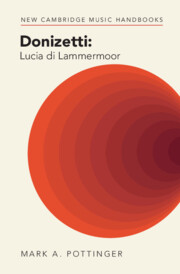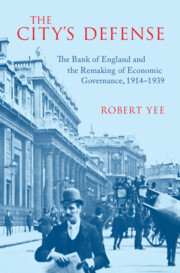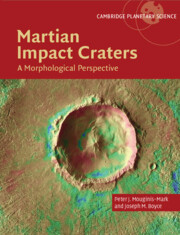Refine listing
Actions for selected content:
1289510 results in Books

Donizetti: Lucia di Lammermoor
- Coming soon
-
- Expected online publication date:
- October 2025
- Print publication:
- 23 October 2025
-
- Book
- Export citation
5 - Resistance to the Epistemology of the Secret of International Law
-
- Book:
- The Epistemology of the Secret
- Published online:
- 23 July 2025
- Print publication:
- 09 October 2025, pp 117-144
-
- Chapter
- Export citation
8 - Biodiversity Conservation and Human Rights
-
- Book:
- International Environmental Law
- Published online:
- 19 September 2025
- Print publication:
- 09 October 2025, pp 247-284
-
- Chapter
- Export citation
Bibliography
-
- Book:
- Escaping Justice
- Published online:
- 19 September 2025
- Print publication:
- 09 October 2025, pp 189-210
-
- Chapter
-
- You have access
- Open access
- HTML
- Export citation
3 - Supply Chain Risks and Uncertainties
- from I - Anatomy of Supply Chain Management
-
- Book:
- Re-Imagining Supply Chain Management
- Published online:
- 22 September 2025
- Print publication:
- 09 October 2025, pp 51-74
-
- Chapter
- Export citation
7 - Human Rights and One Health
- from Part II - One Health and Contemporary Legal Structures
-
-
- Book:
- The Cambridge Handbook of One Health and the Law
- Published online:
- 25 September 2025
- Print publication:
- 09 October 2025, pp 89-103
-
- Chapter
-
- You have access
- HTML
- Export citation
Conclusion
-
- Book:
- Assembling India’s Constitution
- Published online:
- 24 September 2025
- Print publication:
- 09 October 2025, pp 316-324
-
- Chapter
- Export citation
Introduction
-
-
- Book:
- British Law and Literature in the Long Eighteenth Century
- Published online:
- 19 September 2025
- Print publication:
- 09 October 2025, pp 1-24
-
- Chapter
- Export citation
Figures
-
- Book:
- The Psychology of System Change and Resistance to Change
- Published online:
- 23 September 2025
- Print publication:
- 09 October 2025, pp vii-vii
-
- Chapter
- Export citation
1 - Usefulness, Loyalty, and Property
-
- Book:
- God, Slavery, and Early Christianity
- Published online:
- 19 September 2025
- Print publication:
- 09 October 2025, pp 48-90
-
- Chapter
- Export citation
Preface
-
- Book:
- The Narrative Conflict of Traditions in the Late Antique World
- Published online:
- 22 September 2025
- Print publication:
- 09 October 2025, pp vii-viii
-
- Chapter
- Export citation

The City's Defense
- The Bank of England and the Remaking of Economic Governance, 1914–1939
- Coming soon
-
- Expected online publication date:
- October 2025
- Print publication:
- 23 October 2025
-
- Book
- Export citation
Copyright page
-
- Book:
- Armed Internationalists
- Published online:
- 19 September 2025
- Print publication:
- 09 October 2025, pp iv-iv
-
- Chapter
- Export citation

Martian Impact Craters
- A Morphological Perspective
- Coming soon
-
- Expected online publication date:
- October 2025
- Print publication:
- 30 October 2025
-
- Book
- Export citation
Copyright page
-
- Book:
- Copyright Reversion
- Published online:
- 19 September 2025
- Print publication:
- 09 October 2025, pp iv-iv
-
- Chapter
-
- You have access
- Open access
- HTML
- Export citation
Contents
-
- Book:
- The Experience of Work in Early Modern England
- Published online:
- 19 September 2025
- Print publication:
- 09 October 2025, pp v-vi
-
- Chapter
-
- You have access
- Open access
- HTML
- Export citation
Chapter 1 - “Every Common Reader”
-
-
- Book:
- British Law and Literature in the Long Eighteenth Century
- Published online:
- 19 September 2025
- Print publication:
- 09 October 2025, pp 25-44
-
- Chapter
- Export citation
Figure and Tables
-
- Book:
- Escaping Justice
- Published online:
- 19 September 2025
- Print publication:
- 09 October 2025, pp ix-x
-
- Chapter
-
- You have access
- Open access
- HTML
- Export citation
Chapter 3 - Traditional Media Management
-
- Book:
- Politicians and Mass Media in the Age of Empire
- Published online:
- 20 September 2025
- Print publication:
- 09 October 2025, pp 95-133
-
- Chapter
- Export citation
I - Anatomy of Supply Chain Management
-
- Book:
- Re-Imagining Supply Chain Management
- Published online:
- 22 September 2025
- Print publication:
- 09 October 2025, pp 1-74
-
- Chapter
- Export citation
